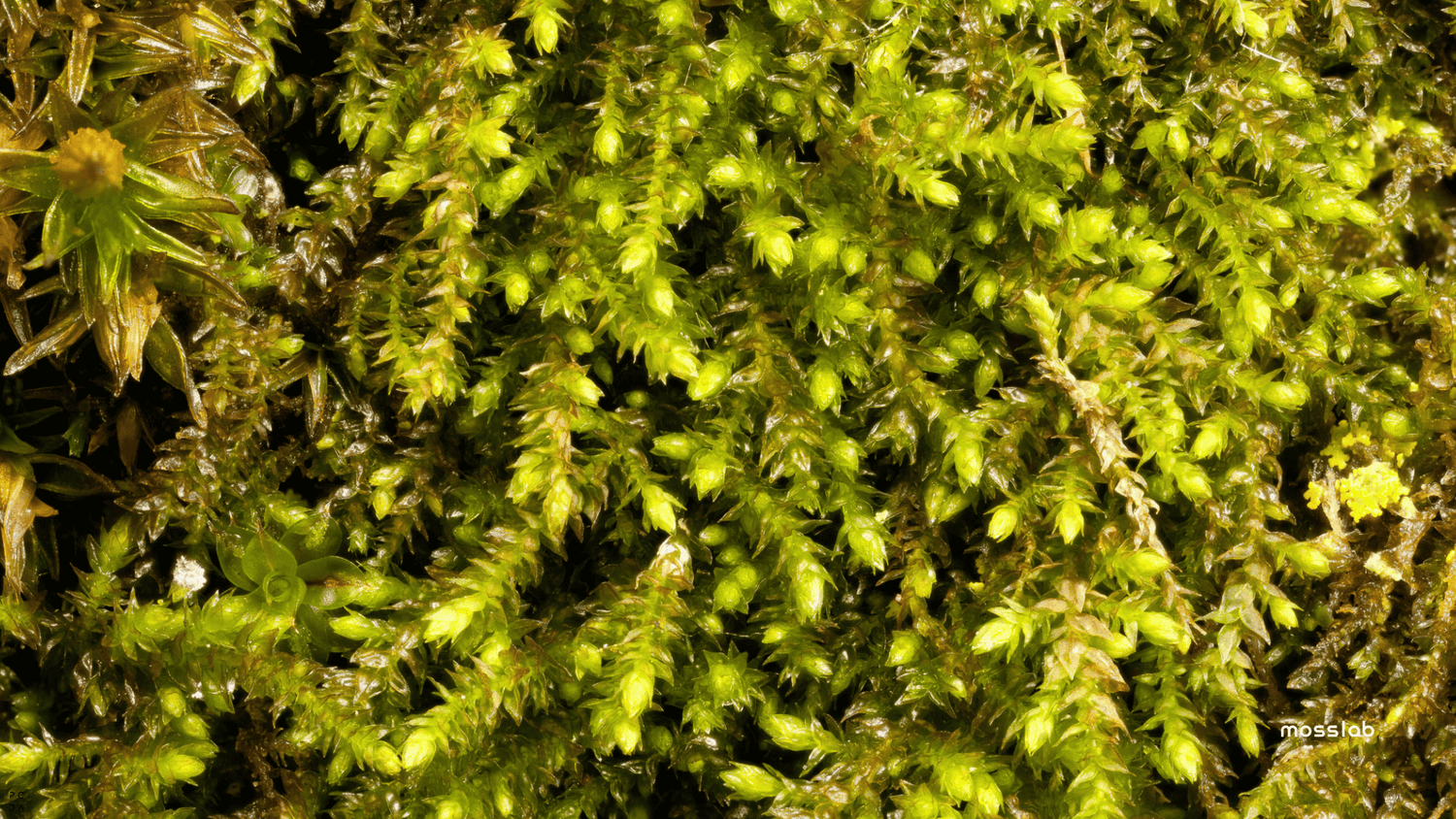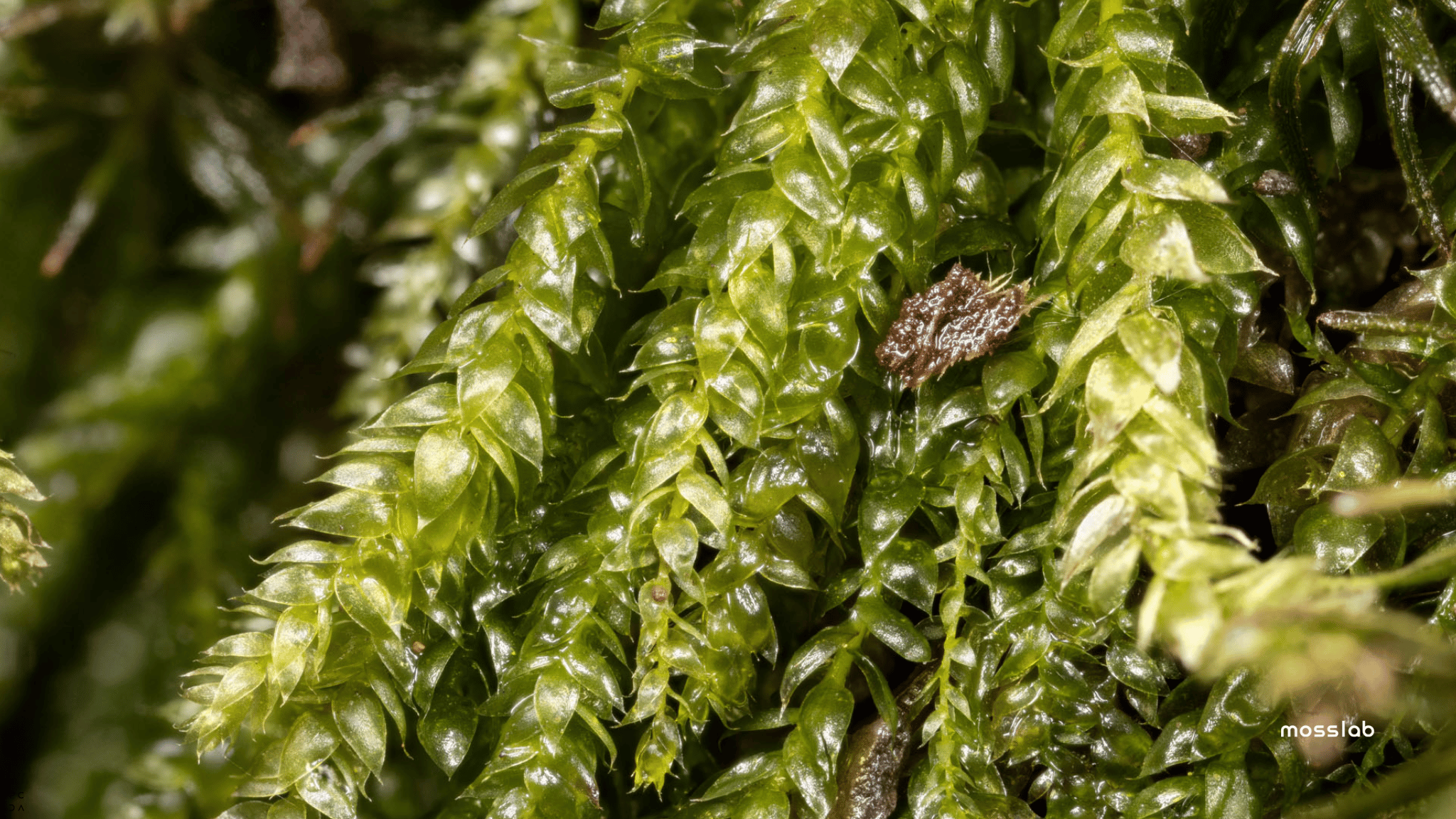You might not think much about moss, yet Graceful Chain Moss, or Leskea gracilescens, has a subtle allure you can't overlook. Found in the shaded, moist corners of eastern North America, this moss quietly performs essential ecological roles. It's not just about its lush, green appearance; there's more beneath the surface, quite literally. How does this seemingly simple organism stabilize soil and indicate habitat health? And why should you care about its adaptability to various environments? These questions hint at a fascinating complexity that lies within the unassuming mats of this moss, waiting to be uncovered.
Characteristics and Appearance
When you come across graceful chain moss, or Leskea gracilescens, you'll notice its low mats of dark green to brownish green leafy stems, which may look stringy when they dry. This moss forms a delicate yet distinctive appearance, characterized by its small leaves measuring just 0.6 to 0.8 mm in length. These leaves are ovate in shape with toothless margins, appearing ascending-spreading when moist and becoming erect-appressed in dry conditions. Their ability to shift between forms is a reflection of the moss's adaptability.
A key feature of graceful chain moss is its spore-bearing capsules. These capsules are supported by stalks, or setae, ranging from 5 to 10 mm long, and vary in color from light yellowish brown to dull red. The capsules themselves are straight-cylindrical, measuring 1.5 to 2.5 mm in length, and are topped with a medium-conical lid. This lid is covered by a hairless membranous hood, providing a unique visual signature to the moss.
Leskea gracilescens also possesses fibrous rhizoids that allow it to cling effectively to coarse surfaces. This trait helps it thrive in moisture-rich, shaded environments, securing its presence in such locales.
Habitat and Distribution
Graceful chain moss (Leskea gracilescens) is primarily found in the moist, shaded environments of eastern North America, thriving in forests, woodlands, and streamside habitats. Its adaptability allows it to flourish on the bark of both living and dead hardwood trees, as well as logs, rocks, and occasionally soil. This versatility in habitat selection makes it a significant part of the flora of North America. You'll often find this moss in areas with high humidity, where it can adapt to various pH levels in the substrate.
Some key points about its habitat and distribution include:
- Graceful chain moss is prevalent in all counties of Illinois, extending to other parts of eastern North America.
- It's commonly found in floodplains and along stream banks, showcasing its preference for consistently moist environments.
- You might spot it in urban areas and along roadsides, demonstrating its adaptability to human-altered landscapes.
- Its presence in Marion and Allen Counties highlights the importance of biodiversity monitoring in these regions.
Ecological Importance
Although often overlooked, graceful chain moss (Leskea gracilescens) plays an important role in maintaining ecological balance. You might not realize it, but this resilient moss is a powerhouse for soil stabilization and erosion control. By forming dense mats, it effectively holds the soil in place, preventing it from washing away during heavy rains or flooding. This is essential in floodplains and along streams where soil erosion can be particularly severe.
Moreover, graceful chain moss provides a habitat for a variety of microfauna and small organisms. These tiny creatures rely on the moss for shelter and sustenance, thereby enhancing local biodiversity and contributing to the overall health of the ecosystem. Additionally, the moss aids in nutrient cycling by capturing organic matter and promoting decomposition processes, enriching the soil with critical nutrients.
Another remarkable feature of graceful chain moss is its role as a bioindicator. It can signal changes in moisture levels and habitat conditions, offering insights into the health of the environment. By retaining moisture, it supports surrounding plant growth and helps maintain local humidity levels, creating a more stable microenvironment for diverse plant and animal life.
Adaptability and Growth Conditions
Thriving in diverse environments, Leskea gracilescens adapts seamlessly to fluctuating conditions, making it a remarkable survivor. This moss prefers moist, humid settings, favoring shaded areas where it can enjoy light to deep shade. You'll often find it growing on a variety of surfaces like tree bark, decaying wood, or even rocks. Its ability to inhabit such diverse substrates underscores its adaptability. During hot, dry spells, Leskea gracilescens enters a dormant state, conserving energy until cooler, moist conditions return, when it resumes growth. This resilience allows it to flourish in both natural and disturbed habitats, showcasing its versatility.
Consider these adaptability aspects:
- Substrate Variety: Grows on tree bark, decaying wood, and rocks.
- Environmental Dormancy: Dormant in dry periods, active in moist ones.
- Shade Preference: Thrives in light to deep shaded areas.
- Urban Tolerance: Some tolerance to urban air pollution, yet prefers undisturbed environments.
Despite its adaptability, Leskea gracilescens thrives best in undisturbed areas, where it can truly showcase its potential. Its presence in urban settings suggests it can endure some pollution, though it prefers the tranquility of natural habitats. Understanding these growth conditions highlights the moss's unique ability to survive and adapt across various ecological settings.
Conservation and Research Efforts
Understanding the adaptability of Leskea gracilescens is just the beginning; protecting this remarkable moss requires dedicated conservation and research efforts. You'll find that conservation efforts focus on preserving its natural habitats, especially in areas prone to habitat destruction and pollution. Regular monitoring is essential to assess how climate change and urbanization impact this moss and its ecosystems. Such monitoring helps in understanding the health of its populations and ensuring that this unique species continues to thrive in its native environments.
Research initiatives are important in documenting the distribution and ecological role of Leskea gracilescens. By gathering valuable data, researchers can inform conservation practices that will help maintain biodiversity. These efforts are supported by collaboration among botanists and environmental organizations, which enhances public awareness and education about the significance of mosses in ecosystems. You'll see that such partnerships are crucial in promoting the conservation of the graceful chain moss.




